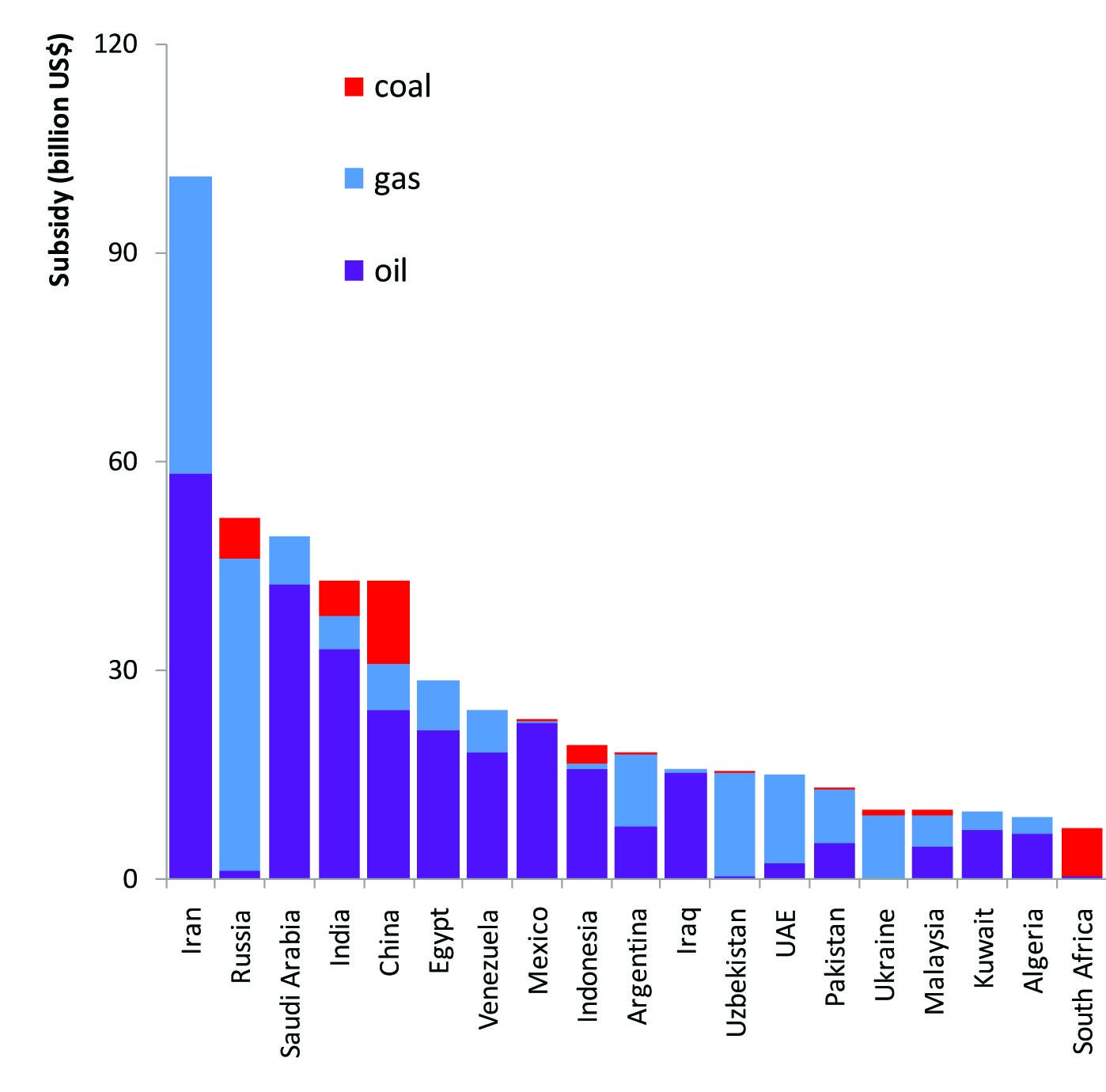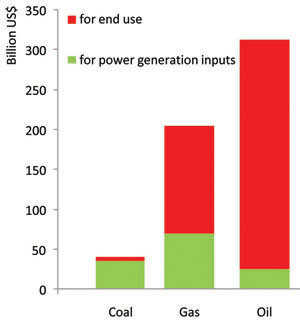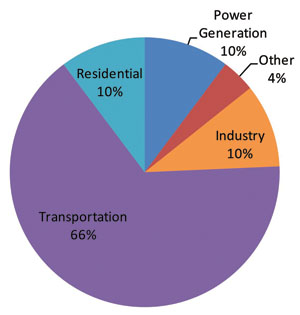When a policy option promises to be both good for the pocketbook and widely popular, it’s hard to ignore. But when it also offers to cut pollution and support international development objectives, it’s almost too good to be true. Perhaps that is part of the reason that the simple proposition put forward by the International Energy Agency (IEA), to phase out subsidies for the use of fossil fuels in all countries by 2015, doesn’t seem to be getting the attention it deserves.
For several years now, the IEA has patiently pointed out to world leaders how much their governments are spending to artificially reduce the price of oil, coal and gas. And yet, despite global economic conditions, it seems the subsidies are actually increasing, reaching US$557 billion in 2008, up from $342 billion just a year earlier. According to the IEA the biggest offenders are Iran, Russia, Saudi Arabia, India, China, Egypt, Venezuela, Mexico, Indonesia, Argentina, Iraq, Uzbekistan, the UAE and Pakistan. The list goes on, including 37 countries said to represent 95% of identifiable subsidies. Canada is not on the list. The cost of these subsidies actually exceeded 50% of GDP in Iran, Iraq, Uzbekistan, and Turkmenistan. (See chart at this link for the full size image.)

The call to phase out subsidies grew louder when the G20 met in Pittsburgh last year, and issued a statement essentially endorsing the IEA recommendations. In a show of collaboration that’s almost unprecedented, the IEA, OPEC, the OECD, and the World Bank issued a joint report on June 16 encouraging the G8 and G20 leaders meeting the following week in Ontario to reinforce the drive for change. (Yes, that’s the same OPEC that represents the petroleum exporters.) Both the G8 and the G20 meetings produced statements backing the joint report’s proposals.

Why would petroleum exporting countries want to see subsidies for fossil fuels reduced? Primarily because these subsidies interfere with trade and investment in the fuels themselves, to say nothing of playing havoc with economic signals in nearly every other part of the economy. In fact, the heavy subsidizers are frequently less developed countries that are sitting on abundant natural resources through an accident of geography. The simple argument of the IEA is that phasing out those subsidies would leave money in the hands of those governments to use on more economic initiatives, to earn international exchange, and to help those who truly need assistance.
The implications for power generation are significant. The subsidies to fossil fuels that are used for power generation are approximately $140 billion of the $557 billion cited above. Removing these subsidies would of course create natural economic incentives for a transition to cleaner fuels for power generation.
Global subsidy phase-out would cut energy-related carbon dioxide emissions by 6.9%, or 2.4 Gt, by 2020, the IEA says, and take the world a good part of the way towards meeting its GHG emission reduction targets. IEA modeling indicates that phase out between 2011 and 2020 would:
• Cut primary global energy demand by 5.8% by 2020.
• Cut global oil demand by 6.5 mb/d in 2020, predominately in the transport sector.
• Reduce emissions by more than 30% of what is needed to be on track to meet the 2 degrees C target by 2020.
The G20 Declaration released on June 27 praised the joint report and promised to keep working on the issue at future summits. (See “G8 and G20 back work on low carbon energy,” page 42.)
The Joint report is recommended reading for anyone in the energy sector. Freely available on the internet, it includes:
• Discussion of the scope of energy subsidies
• Preliminary estimates of energy subsidies, and identification of the gaps in the existing data and issues around the measurement of energy subsidies
• Modeling-based analysis of the implications of phasing-out fossil fuel subsidies on the economy, including socio-economic and trade impacts, ramifications for the environment and the energy sector, and
• Suggestions for the implementation of phase-out programs for these subsidies, drawing on country case studies, including discussion of how to address the inevitable social impacts.
Canada is in a unique position to take this message to the world because it is a major energy exporter and a credible example in terms of international co-operation. It has good working relations with many of the countries on the list of subsidizers and could make the case that Canada has plenty of indigenous petroleum resources but has resisted the temptation to subsidize its domestic consumers. Such positioning would resonate with and reinforce Canada’s stance on other international trade issues – in favour of reliance on market forces and against protectionism and domestic subsidies on everything from grain to softwood.
For Canada to establish a position of leadership on this issue internationally would be consistent with its drive to be seen as an energy superpower and an active proponent of multi-lateralism. It may even help improve Canada’s international reputation in the environment department, arguably eliminating far more emissions than the tar sands is likely to produce, for example.

The IEA has carefully crafted its recommendations so that they will not deny essential energy resources to the world’s poor: “Policies to phase-out subsidies for kerosene, LPG and electricity must be carefully designed not to restrict access to essential energy services as these fuels often support the basic needs of the poor and can be more easily targeted than subsidies on other energy forms. ... [S]ubsidies to kerosene, LPG and electricity in countries with low levels of modern energy access (i.e., electrification rates under 95% or modern fuels access under 85%) represented just 11% of the $557 billion of consumption subsidies in 2008. Furthermore, studies have shown that most existing subsidy programs for these fuels could be made more cost-effective through better targeting.” In both economic and policy terms it is much more effective for a government to charge the full price for energy commodities, and provide financial assistance directly to individuals as needed, than to use the same amount of money subsidizing the price of energy.
The IEA is establishing an online database to allow the public to access data on fossil-fuel subsidies, including breakdowns by country, by fuel, and by year. Further details are available at http://www.worldenergyoutlook.org/subsidies.asp.
The joint report deals only with relatively direct forms of subsidy, and does not touch the more delicate questions of tax expenditures or environmental externalities that also act to support fossil fuel consumption in nearly all countries including Canada.
As a major petroleum exporter with a message to carry internationally on trade, environment, and multilateralism, the federal government would do well to priorize this issue. Where else can Canada get so much bang for its buck internationally? Taking the case for phase-out of fossil fuel subsidies to the world stage would burnish our reputation in more ways than one, help to rationalize global markets for a key export, and do a world of good for the planet.
— Jake Brooks, Editor.
